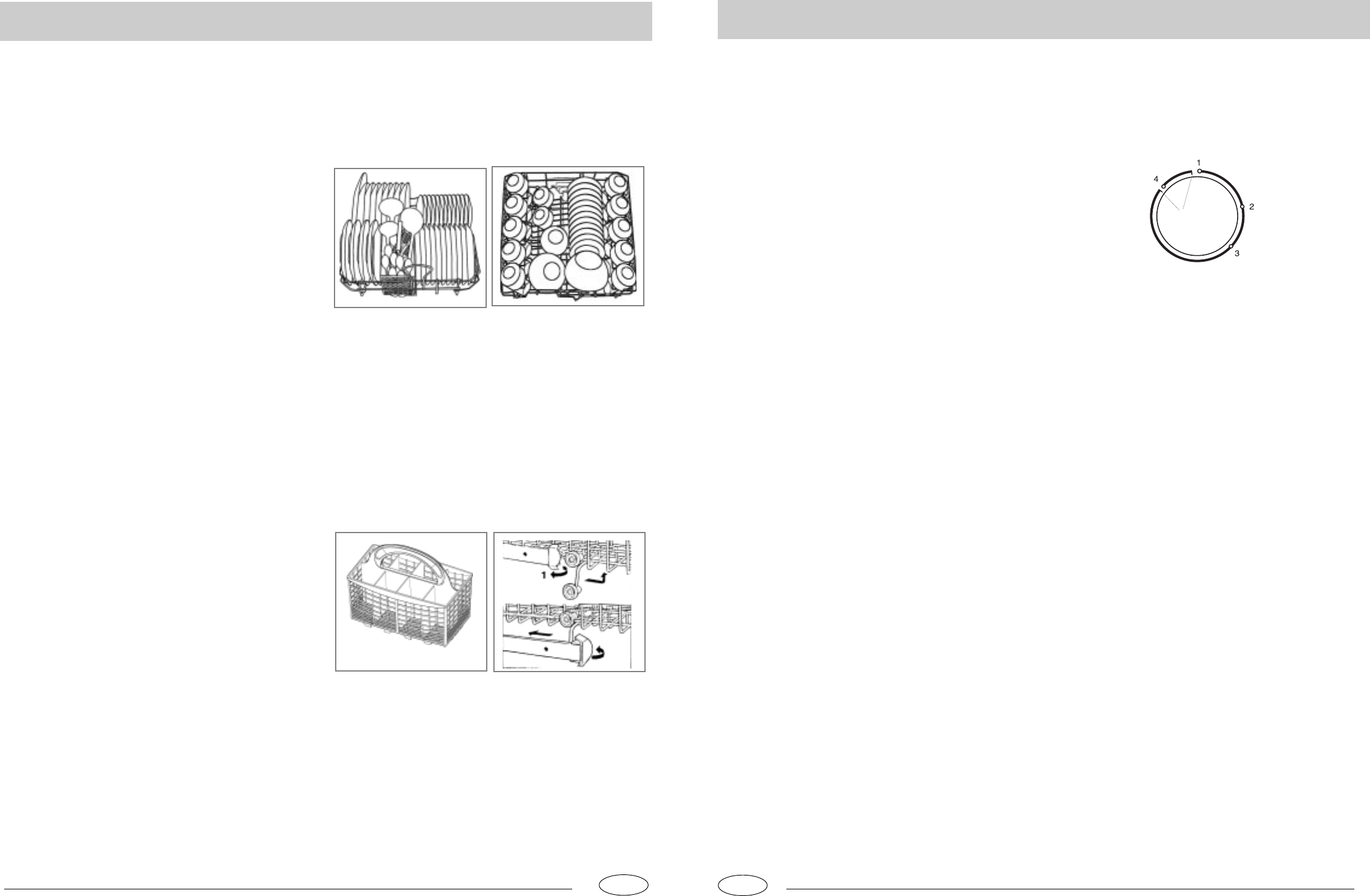
.5.
.6.
Loading the Dishwasher
Before placing the dishes in the dishwasher, remove the large food
particle to the prevent the filter from becoming clogged,which re-
sults in reduced performance.
If the pots and pans have baked-on food that is extremely hard to
remove, we recommend that they be allowed to soak before they
are washed.This will eliminate the need for extra wash cycles.
Pull out the rack to facilitate loading the dishwasher.
How to Use the Lower Rack
We recommend that you place the most difficult to clean items on
the bottom rack:pots ,lids,serving dishes and bowls,as shown in
the figure to the right.
It is preferable to place serving dishes and lids on the sides of the
racks in order to to avoid blocking the rotation of the top spray
arm.
- Pots,serving bowls,etc.must always be placed top down.
- Deep pots should be slanted to allow the water to flow out.
- Silverware should be placed in the silverware basket with the
handles at the bottom;if the rack has side baskets,the spoons
should be locaed individually into he appropriate slots.Especially
long utensils should be placed in the horizontal position at the
front of the upper rack(see fig. A).
How to Use the Upper Rack
The upper rack is designed to hold more delicate and lighter
dishware,such as glasses,coffee and tea cups and saucers,as well
as plates,small bowls and shallow pans (as long as they are not
too dirty).
Position the dishes and cookware so that they do not get moved
by the spray of water.
The upper rack can be adjusted for height by using the knobs lo-
cated on the sides of the rack itself(see fig. B).
Lower Rack
Upper Rack
Load for 12 Standard Settings
Normal Daily Load
fig.A
Turning on the Appliance
Starting a wash cycle
- Make sure that the plug for the appliance is inserted into the wall
socket.
- Make sure that the water supply is turned on to full pressure.
- Load the dishwasher (see the section entitled,"Loading the
Dishwasher").
- Pour in the detergent (see the section entitled,"Salt,Dergent and
Rinse Aid").
- Turn the knob located on the right of the control panel in the
clockwise direction until the number or symbol for the cycle set
ting is aligned with the reference mark(see the section entitled,
"Wash Cycle Table").
- Press the ON-OFF button,and the ON-OFF light will turn on.At
this point,the wash cycle will begin.
Cancelling or modifying a wash cycle setting
Premise:A cycle that is underway can only be modified if it has
only been running for a short time.Otherwise, the detergent may
have already been used,and the appliance mayhave already
drained the wash water If this is the case,the detergent dispenser
must be refilled(see the paragraph entitled,"Loading the
Detergent").
Press the ON-OFF button,and the ON light will turn off.Rotate
the knob in the clockwise direction to the desired cycle setting
(see the section entitled.:Starting a wash cycle?F.Then, turn
the dishwasher back on using the ON-OFF button.
If you forget to load some of the dishes
The wash cycle can be interrupted by pressing the ON-OFF button.
You can then load additional dishes and turn the appliance back
on.The cycle will start where it left off.
Wait a few minutes before unloading the dishwasher to avoid
handling the dishes and utensils while they are still hot and more
susceptible to breakage.They will also dry better.
At the end of the wash cycle
When the knob stops turning and is aligned with a STOP mark
(see figure),the cycle has finished.Turn off the appliance using
the ON-OFF button,turn off the water supply and open the door
of the dishwasher.
STOP
GB
GB
fig.B
2
1
3
4








